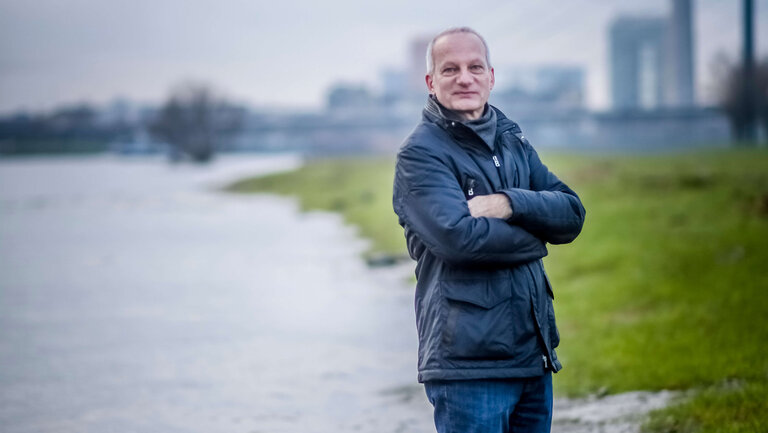As a result of climate change, meteorologists expect extreme water events to occur more frequently and with greater severity in the years ahead. Last Thursday a hurricane-force storm – called Friederike by the Institute of Meteorology at Freie Universität Berlin – caused chaos, power outages, train cancelations and enormous damage in the German federal state of North Rhine-Westphalia. Friederike had barely taken her leave when flooding returned. ‘Weather phenomena such as storms, torrential rain and heatwaves are the initial consequences of impending climate change. It is therefore becoming all the more important for social stakeholders in the fields of politics, economics and science to encourage people involved in urban development to focus on suitable climate adaptation strategies and prevention measures,’ said Gregor Grassl, Senior Project Partner and Head of Green City Development at Drees & Sommer SE.
Role of torrential rain manager: to minimize the effects of sudden occurrences of massive quantities of water in towns and cities
Drees & Sommer’s infrastructure experts specializing in weather phenomena have been concentrating on measures of this nature, both as a package and as individual initiatives, and have been providing guidance and advice to towns and municipalities in particular. Their approach in projects of this nature is to analyze responses to a whole series of questions in order to assess, in particular, the risks and dangers affecting urban areas when inundated by large quantities of water. ‘Massive cloudbursts can devastate entire cities. This often leads to flood risks some distance from the event, whose effects can be difficult to calculate. It is therefore important to take measures prior to the occurrence of such events that will minimize the negative effects as much as possible,’ explained Jochen Kurrle, Senior Project Partner at Drees & Sommer SE, whose main focus is the field of torrential rain risk management – a torrential rain manager, so to speak.
Important findings are obtained from questions regarding the state of water and drainage systems, mobile and fixed flood protection measures, and whether there are enough retention basins and retention areas to accommodate large quantities of water.
How easy it is to reach important services such as fire stations and hospitals in the event of a catastrophe is another key factor. There is also particular focus on how to carry out construction work in our towns and cities both now and in the future. The findings give rise to an integrated infrastructure system plan which Drees & Sommer then uses as the basis for its project work. Those with responsibility for the project also examine the project, risk and cost structure of the plan.
A park when the sun is shining – a water retention area when it is raining
‘Intelligent solutions can actively combat devastation. By planning our new infrastructures intelligently we can also have a positive effect on our microclimate and the overall energy balance of our city districts,’ said Jochen Kurrle. The creation of a blue-green infrastructure is key to adapting our cities to the force of nature that is rain water – an infrastructure that combines green spaces, water management and the strategic use of modern technology. This affects central services provided by the public sector: mobility, public spaces, safety and biodiversity. One example of innovative blue-green infrastructure can be seen in parks that serve as leisure spaces when the weather is good, and that transform themselves into lakes or canals during cloudbursts. This concept of multi-functional spaces is a natural way to retain large quantities of water. With this single measure, innovative planning can enable the simultaneous provision of flood protection, heat protection, air pollution control, biodiversity and attractive leisure spaces.
This holistic approach to adapting cities to climate-induced changes and extreme weather events is a task of enormous proportions. In order to prevent the costs of conversion measures and new construction measures from reaching astronomical proportions, torrential rain protection measures are combined with already-planned public infrastructure construction work, and are firmly anchored in urban development plans. ‘Measures incorporated in relevant projects are not simply targeted at optimizing the use of public spaces in the event of adverse weather conditions. As just as much account is taken of aesthetic considerations and the comfort of local residents as of functionality in emergency situations, quality of life is not simply maintained – it is actually enhanced,’ commented the Senior Project Partner. And torrential rain managers are not just involved in German projects; they are also going about their work in Copenhagen. The Danish capital has become a role model for other cities when it comes to climate adaptation strategies.
